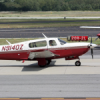-
Posts
375 -
Joined
-
Last visited
-
Days Won
1

Skywarrior replied to Bennett's topic in Miscellaneous Aviation Talk

Skywarrior replied to 64M20E's topic in Miscellaneous Aviation Talk

Skywarrior replied to AmigOne's topic in Miscellaneous Aviation Talk

Skywarrior replied to 201er's topic in General Mooney Talk

Skywarrior replied to benpilot's topic in Modern Mooney Discussion

Skywarrior replied to 201er's topic in Miscellaneous Aviation Talk

Skywarrior replied to Skywarrior's topic in Mooney Bravo Owners

Skywarrior replied to Skywarrior's topic in Mooney Bravo Owners

Skywarrior replied to Skywarrior's topic in Mooney Bravo Owners
We have placed cookies on your device to help make this website better. You can adjust your cookie settings, otherwise we'll assume you're okay to continue.